Barry Hutchings
Barry Hutchings comes from a family of athletes with a tradition of using Indian Clubs, we first met up during my Indian Clubs World Tour 2013, then also 2014 and 2015. Barry Hutchings and I spent a great couple of days last year discussing techniques and movements of Indian Clubs in his garden outside the Club and Kettlebell. I decided to ask Barry Hutchings to talk about his family history and rediscovery of Indian Clubs which have been actively used in his family over three generations.
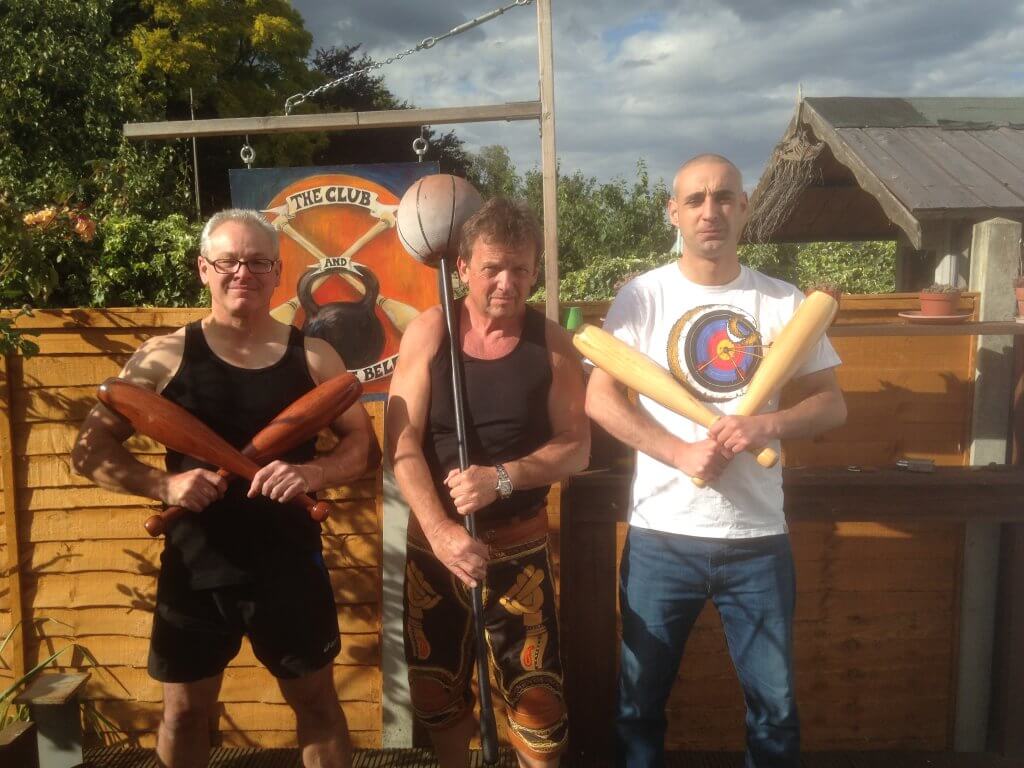
Left to right:- Barry Hutchings – Paul Taras Wolkowinski – Zé Ricardo
When did you start swinging Indian Clubs?
Barry Hutchings:- I started swinging clubs in 2007 so as to continue the family tradition. Both my father and grandfather swung clubs and so I thought I’d better take up the baton. (Sorry for the pun!)
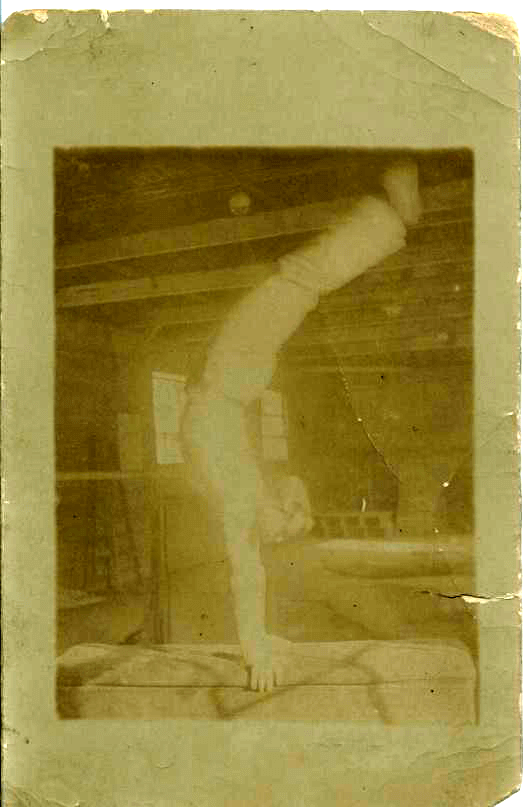
Barry Hutchings’ Grand Father
What sparked your interest in Indian Club Swinging?
Barry Hutchings:- I’d always been interested in clubs, my grandfather used to swing them. I remember him swinging them back in the 1960s. He’d learned when he was in the British Army in Hong Kong. That was in 1912-13. I wish he was still here so I could find out else he knew! In those days I knew nothing about the nuances of club swinging and so didn’t think to ask him his opinion on button or ball ends! But I do know he was a respected physical culturist. Apart from club swinging, he was an accomplished gymnast too.
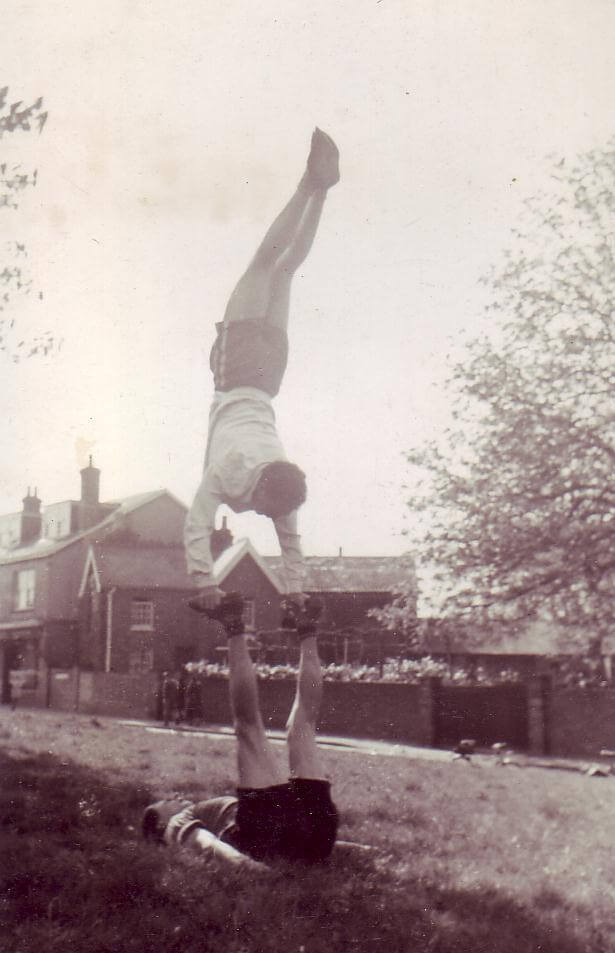
Barry Hutchings’ Father
Can you explain why you enjoy Indian Club exercise?
Barry Hutchings:- It’s fun! I love swinging clubs. There is so much variety. From tiny teardrops to monumental meels. Clubs have been a great benefit to me. They loosen my arthritic elbows and are a great conditioning tool. I love them.
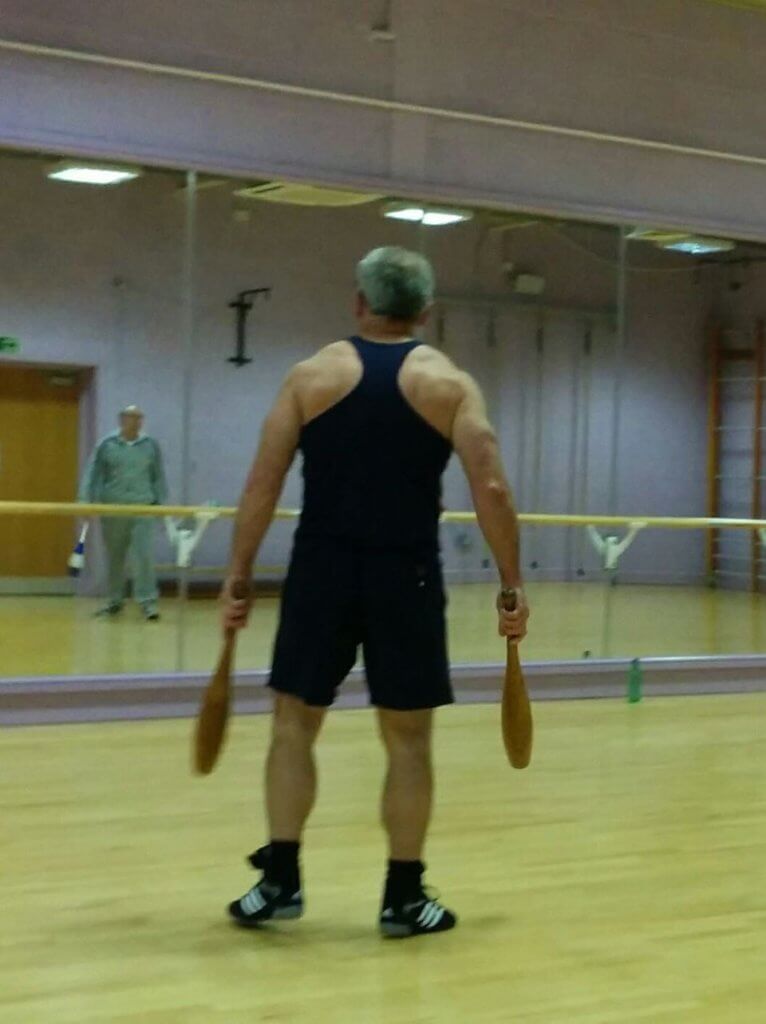
Barry Hutchings
Do you swing Indian Clubs one or two-handed?
Barry Hutchings:- Both. I swing two-handed first, usually for about 20 minutes then finish off with single hand drills. I also swing one-handed when I’ve finished a heavy weightlifting session, which helps to loosen the elbows!
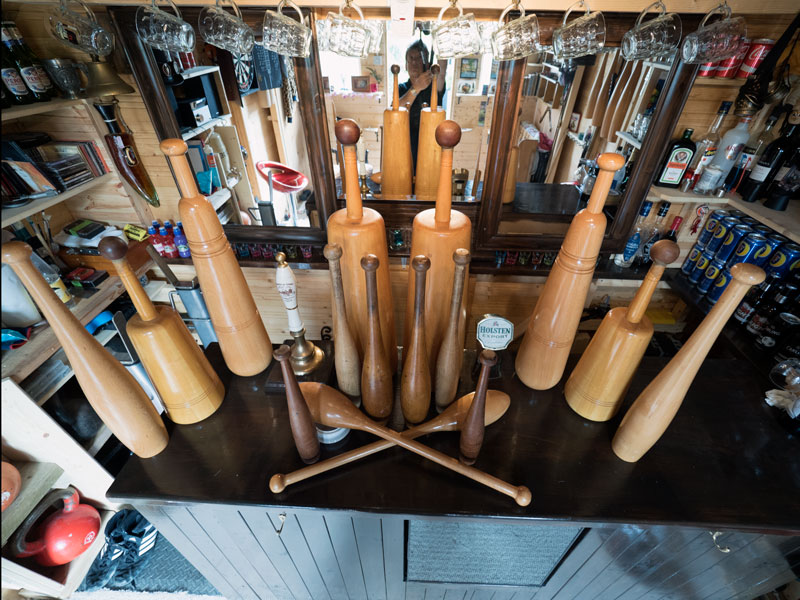
If you were to be cast away alone on a desert island, which pair of Indian Clubs would you choose to have with you?
Barry Hutchings:- My granddad’s clubs. They’re made from rosewood, weigh 2lbs and are probably over a hundred years old.
What are the characteristics of your favourite Indian Clubs?
Barry Hutchings:- My Granddad’s clubs swing beautifully! Made from rosewood and weigh 2lb. (My second favourite is the 11 kilo meels that belonged to the wrestler, Clayton Thomson.)
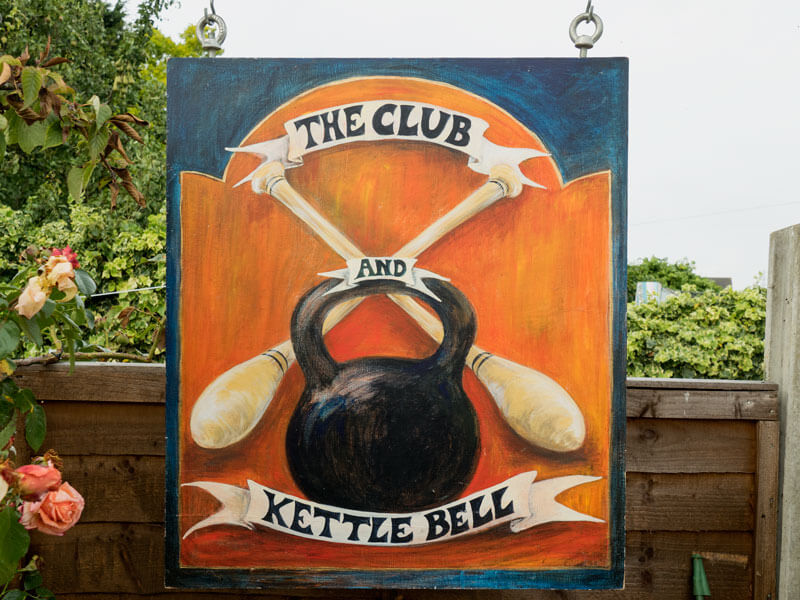
Why did you decide to become an Indian Club trainer?
Barry Hutchings:- Originally because I was so bad at it! I saw my Dad swinging them in the backyard in 2007. He was an old man then and swung them like a master. I had a go and discovered that it was as easy as it looked! I was determined to learn how to swing them.
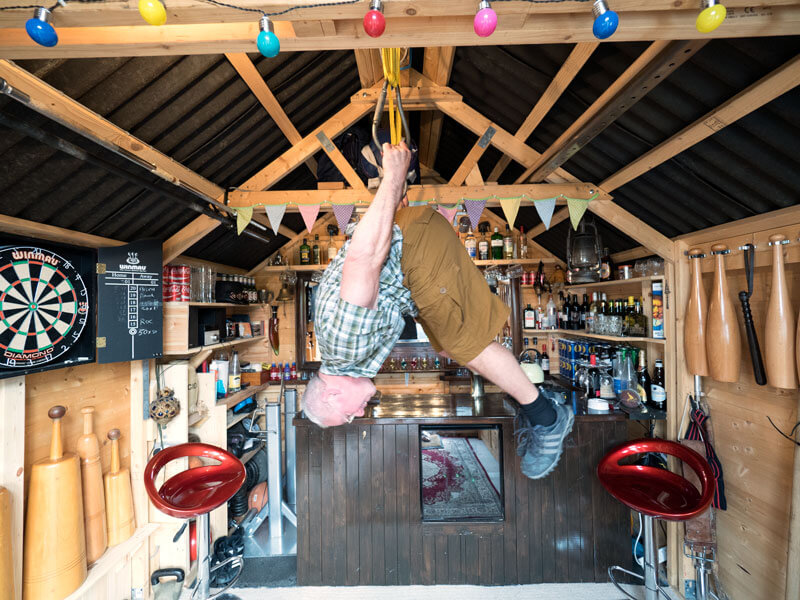
Barry Hutchings on his gymnastics rings
What are the benefits of club swinging?
Barry Hutchings:- The main benefits are mobility and conditioning.
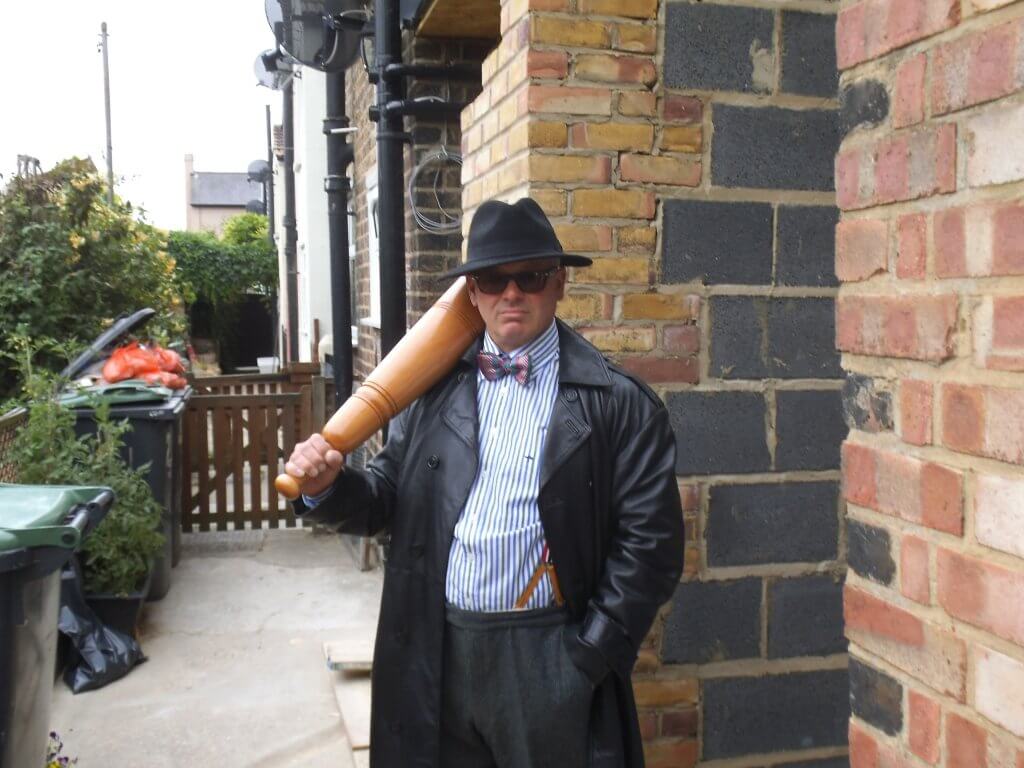
How do you combine Indian Clubs with other training?
Barry Hutchings:- I warm up with clubs before I lift weights.
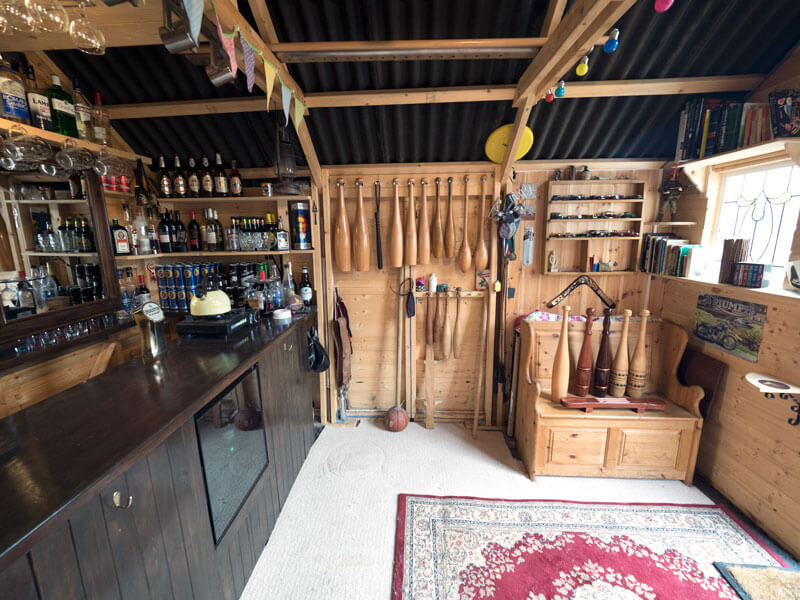
Barry Hutchings – Inside the Club and Kettlebell Studio and Bar
Out of all the old books written about Indian Clubs, which one is your favourite and why?
Barry Hutchings:- I hate to admit this, but I’ve never read any!
Is there anything else you would like to share?
Barry Hutchings:- I’d love to know what the wrestler, Clayton Thomson knew about club swinging. His daughter sold his meels after he died, and she told me that he was swinging meels since the 1960s. He had a full set specially made. I have his 11-kilo set and his 4.5-kilo set. His daughter kept the rest as door stops!
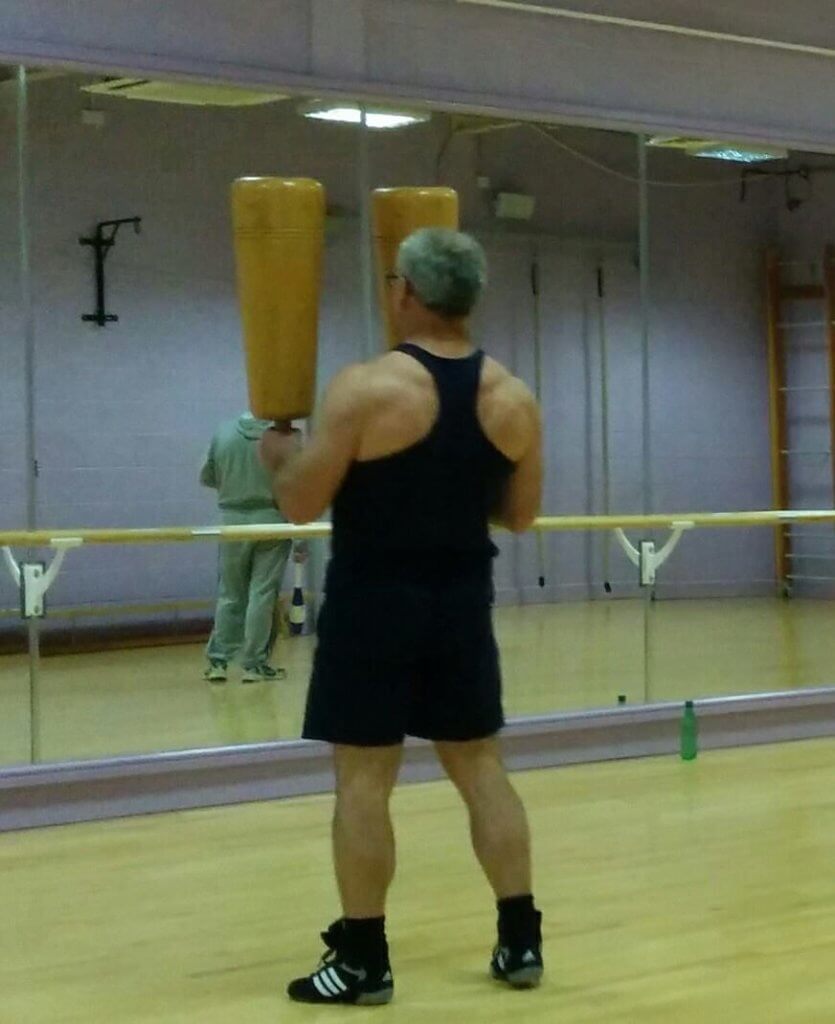
Barry Hutchings – Clayton Thomson’s 11kg Meels
Location:- Barry Hutchings lives in Southern England

